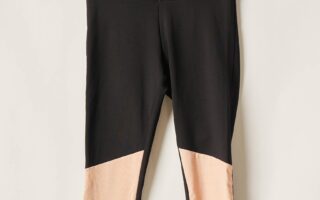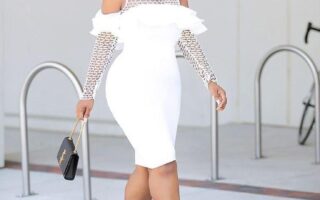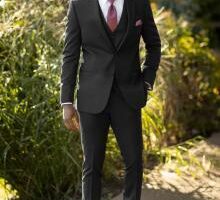In the world of fashion, the runway serves as a vibrant canvas where creativity and artistry collide, showcasing garments that often transcend the boundaries of everyday wear. Among the dazzling array of garments paraded down these catwalks, runway dresses stand out as symbols of innovation and elegance. These captivating pieces are not only a reflection of the designer’s vision but also a celebration of form, fabric, and movement. From ethereal fabrics that flow with grace to bold silhouettes that make a statement, runway dresses encapsulate the zeitgeist of each season, inviting us to explore the endless possibilities of style. Join us as we delve into the enchanting realm of runway dresses, examining the trends, inspirations, and the intricate artistry that brings these extraordinary creations to life.
Table of Contents
- The Evolution of Runway Dresses Through the Decades
- Key Fabrics and Textures That Define Contemporary Runway Styles
- Accessorizing runway dresses for maximum impact
- Top Designers Leading the Way in Runway Fashion Trends
- Q&A
- To Wrap It Up
The Evolution of Runway Dresses Through the Decades
The journey of runway dresses has experienced a remarkable transformation, mirroring the societal changes, artistic movements, and technological advancements that have defined each decade. In the 1920s, flapper dresses dazzled with their straight cuts and dropped waistlines, reflecting a newfound freedom and the spirit of the Jazz Age. The 1970s saw the rise of bold patterns and vibrant colors, embracing the bohemian ethos with flowing maxi dresses that celebrated femininity and individuality. Key characteristics across these decades include:
- 1920s: Fringe details and beaded accents
- 1940s: Tailored silhouettes with a touch of glamour
- 1960s: Mini dresses and bold geometric prints
- 1980s: Power dressing with oversized shoulders and dramatic fabrics
- 2000s: Eclectic layering and a return to vintage aesthetics
As we embrace the modern era, runway dresses have evolved further, becoming a canvas for designers to express their creativity while addressing sustainability and inclusivity. The contemporary landscape showcases innovative materials, intricate craftsmanship, and avant-garde silhouettes that challenge traditional beauty standards. Designers are also increasingly mindful of the cultural narratives and representation behind their creations, leading to a rich tapestry of influences that create a more inclusive runway. A glimpse into the current trends reveals:
| Trend | Description |
|---|---|
| Sustainable fabrics | Use of recycled and eco-friendly materials |
| Gender-fluid designs | Styles that transcend traditional gender norms |
| Digital fashion | Virtual designs for online wear and alternate realities |
Key Fabrics and Textures That Define Contemporary Runway Styles
In the world of contemporary runway styles, fabrics and textures play a pivotal role in defining a dress’s aesthetic and wearability. One can observe a profound shift towards sustainable textiles, where designers increasingly favor organic cotton and Tencel, melding eco-friendliness with high fashion. This commitment to sustainability is often showcased through the use of textured linen, which offers a casual elegance, and recycled polyester, resolutely cementing its place in modern couture. From flowing chiffon that embodies a soft romanticism to structured neoprene lending a sculptural quality, the fabric choices of contemporary dresses are both visually stunning and environmentally mindful.
Another defining characteristic of today’s runway ensembles is the interplay between smooth and tactile textures. Designers are enamored with juxtaposing shiny satin against more rugged fabrics, such as velvet. This creates a visually captivating dynamic that compels the viewer’s eye. Here’s a quick look at some of the trending fabric pairings and their characteristics:
| Fabric | Texture | Style Association |
|---|---|---|
| Satin | Smooth | Elegant evening wear |
| Ribbed Knit | Textured | Chic casuals |
| Silk Organza | Translucent | Romantic accents |
| Georgette | Breezy | Effortless movement |
| Leather | Edgy sophistication |
Accessorizing runway dresses for maximum impact
Accessorizing runway dresses offers a realm of creativity that transforms a stunning outfit into a breathtaking statement. Emphasizing the silhouette of the dress is crucial, so consider layered necklaces or a statement belt that draws attention to the waist while enhancing the curves. Striking earrings can frame the face beautifully, and brilliantly colored heels can add a captivating contrast that allows the dress to stand out even more. Additionally, a chic clutch not only serves as a practical necessity but also as a focal point of your ensemble. Here are some accessory ideas that can elevate your runway look:
- Chunky Jewelry: Oversized bracelets and necklaces.
- Hats: Wide-brimmed hats or sleek fedoras.
- Sunglasses: Bold frames for an air of mystery.
- Scarves: Silk scarves tied creatively around the wrist or handbag.
Pairing your runway dress with the right accessories also requires an understanding of color theory and texture. Mixing materials can create depth, so combine flowing fabrics with harder accessories. Metallic elements like a clutch or statement ring can enhance the elegance of a soft, flowing gown. To further guide your choices, consider this handy table of color combinations that work harmoniously:
| Dress Color | Accessory Colors | Best Textures |
|---|---|---|
| Red | Gold, Black | Leather, Silk |
| Blue | Silver, White | Suede, Mesh |
| Green | Bronze, Tan | Knits, Organza |
| Black | Bright colors like Neon, Metallic | Rhinestoned, Satin |
Top Designers Leading the Way in Runway Fashion Trends
As the fashion world continuously evolves, a handful of visionaries consistently redefine what’s possible on the runway. This season, designers are embracing a kaleidoscope of styles, merging traditional craftsmanship with avant-garde concepts. Collaborations, bold color palettes, and unexpected fabrics define their collections, bringing fresh flair to the catwalk. Notable influences include:
- Reimagined Silhouettes: Think asymmetrical cuts and layered structures.
- Sustainable Fashion: An emphasis on eco-friendly materials.
- Statement Accessories: Oversized jewelry and dramatic shoes to elevate simple dresses.
- Textile Innovation: The use of tech-infused fabrics that enhance form and functionality.
This progressive spirit is further amplified through the various fashion weeks, where top designers showcase their latest innovations. The interplay of cultures is also on display, as global inspirations breathe life into contemporary collections. Designers like Valentino, Gucci, and Balenciaga are leading this charge by creating garments that not only tell a story but also challenge societal norms. Below is a concise overview of how these designers are shaping the future of runway fashion:
| Designer | Signature Style | Current Trend Focus |
|---|---|---|
| Valentino | Romantic Ruffles | Bold Mono Color |
| Gucci | Eclectic Patterns | Nostalgic Aesthetics |
| Balenciaga | Minimalist Futurism | Oversized Proportions |
Q&A
Q&A: All About Runway Dresses
Q: What are runway dresses?
A: Runway dresses are high-fashion garments showcased during fashion shows. They often reflect the latest trends, designer creativity, and the artistry of fashion. These dresses can range from avant-garde creations to elegant evening wear, each piece serving as a statement of style and imagination.
Q: How do designers choose the dresses for a runway show?
A: Designers curate runway dresses to embody the theme of their collection, often drawing inspiration from art, culture, or personal experiences. The selection process involves meticulous planning, considering fabrics, colors, and silhouettes that will resonate with the audience while showcasing the designer’s unique vision.
Q: What materials are commonly used in runway dresses?
A: Runway dresses are made from a variety of materials, including luxurious silks, innovative synthetics, flowing chiffons, and sometimes even unconventional materials like plastic or metal. Designers often experiment with textures and finishes to create garments that are visually stunning and thought-provoking.
Q: How do runway dresses differ from everyday fashion?
A: While runway dresses often push the boundaries of creativity and may be more theatrical, everyday fashion focuses on wearability and practicality. However, elements from runway designs frequently trickle down into mainstream collections, influencing casual wear with inspired details, cuts, and color palettes.
Q: What role do models play in presenting runway dresses?
A: Models are essential in bringing runway dresses to life. Their movement, posture, and overall presence can elevate the garment’s appeal, showcasing how the dress interacts with the body. A skilled model can highlight a dress’s unique features, helping the audience imagine how it might look in real situations.
Q: Can anyone wear runway dresses, or are they strictly for the fashion elite?
A: While runway dresses are often seen on models and celebrities, fashion has evolved to become more inclusive. Many designers now create capsule collections that draw inspiration from their runway pieces, making similar styles accessible to a broader audience. Fashion is about personal expression, so anyone can wear their interpretation of runway style.
Q: How has social media impacted the perception of runway dresses?
A: Social media has transformed the way runway dresses are perceived and consumed. Platforms like Instagram and TikTok allow designers to showcase their collections to a global audience instantly. This immediacy creates a platform for dialogue and inspiration, enabling fashion enthusiasts to engage with and interpret runway trends in real time.
Q: What can we expect for the future of runway dresses?
A: The future of runway dresses promises to be dynamic and innovative. As designers explore sustainability, technology, and inclusivity, we may see runway garments that not only make bold statements but also prioritize ethical practices and diverse representations. The evolution of runway fashion will continue to reflect societal changes and individual expressions of style.
Q: Where can I follow trends in runway dresses?
A: To stay updated on the latest in runway dresses, consider following notable fashion publications, designer social media accounts, and fashion influencers. Additionally, attending fashion weeks virtually or in person can provide firsthand glimpses of emerging trends and inspire your own style choices.
To Wrap It Up
As we draw the curtain on our exploration of runway dresses, we find ourselves enchanted by the seamless blend of artistry and fashion that defines this captivating realm. Each garment, a canvas for designers’ visions, tells a story that extends far beyond the catwalk—reflecting cultural shifts, personal expression, and the ever-evolving landscape of style. From billowing fabrics that whisper elegance to bold silhouettes that command attention, runway dresses embody the spirit of innovation that thrives in the world of haute couture.
As you venture into your own wardrobe, may you carry the inspiration of these stunning creations with you. Whether it’s a simple dress that makes you feel empowered or a daring ensemble that pushes you out of your comfort zone, remember that fashion is not just about clothing—it’s about celebrating individuality and embracing the moments that take your breath away. So, let the runway be your muse, and may every dress you choose be a reflection of your unique journey in the tapestry of style.



